Benin - Where to see voodoo?
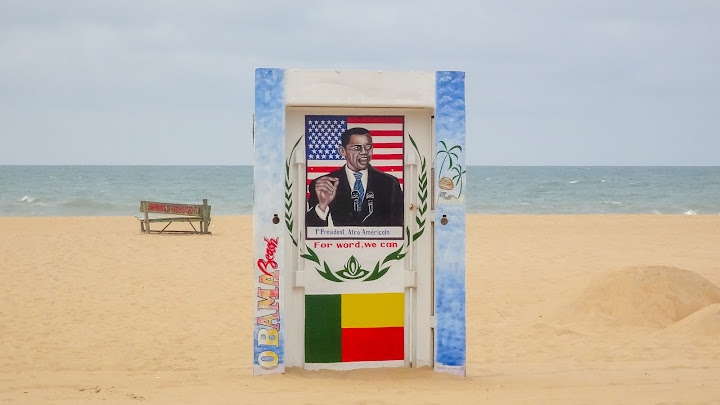
Right next to Nigeria there is Benin, with a bus ride from Lagos. Not far from the border is the city of Cotonou and in comparison to Nigeria, there is peace and tranquility. This country is most famous for voodoo.
I didn't spend much time in Benin, but even a few days were enough to see the major attractions in Cotonou and then continue traveling to Togo overland.
And speaking to a few locals was very enlightening to learn what voodoo was about. I learned that this form of sorcery was crafted in Benin, but most of it I solely knew from movies when the mean person pulls out an ugly doll to put needles on its shoulder to remote-control the enemy.
What is voodoo in Benin?
But that's not what it is in Benin. For the locals, it's a normal religion with its own rituals and a large percentage of the people in Benin is practicing it, like Christmas or Easter. They use it as medicine and as they don't have a pharmacy industry, they are using dead animals. Which part of an animal they have to use is told to them by the voodoo priest. For example, the voodoo priest tells the customer to buy a gorilla hand on the market to protect the house and home.
Voodoo practitioners have a specific pattern of clearly visible scars on their cheeks. So while walking through Cotonou and visiting the attractions, I tried to spot the voodoo people, and there were indeed many of them among the few places to see.
Voodoo practitioners have a specific pattern of clearly visible scars on their cheeks. So while walking through Cotonou and visiting the attractions, I tried to spot the voodoo people, and there were indeed many of them among the few places to see.
Map of Cotonou
Day 1 - From Lagos to Benin by bus
I left Lagos this morning with the pleasant bus (incl. toilet) from company ABC, which was only 13'000 CFA for the ticket.The comfort at the beginning of the ride was promising, but it turned worse with every kilometer. The roads in Nigeria are catastrophic, even the busiest and biggest long-distance roads have neverending potholes.
The bus stopped at the border to Benin.
Without a warning Nigeria has closed the border, apparently because of some dispute about imported rice from Benin to Nigeria and Nigeria wants to state an example at Benin.
Closed borders at Benin
After a few hours of waiting in front of the closed border between Nigeria and Benin without knowing when or if it will open again, the bus was able to continue. Even if the waiting time and delay carried over into the hours, it could have turned out much worse. Or there could have been dozens of other reasons why my arrival in Cotonou was delayed.The immigration authorities were quite relaxed, the entry with the new E-Visa worked very well.
The journey from the Nigeria/Benin border to Cotonou took only about an hour.
I was unloaded at the ABC bus station a little west of Cotonou. The bus then drove on to Togo.
I was unloaded at the ABC bus station a little west of Cotonou. The bus then drove on to Togo.
The calm neighborhood Ayelawadje is good and cheap to stay
I missed being in the best part of Cotonou, which is right next to the airport. My apartment was at the other end of Cotonou, which was a quiet area but not the most central to explore Cotonou.But Cotonou is not very big and quite limited in terms of things to see.
Day 2 - Sightseeing in Cotonou
Benin is a former French colony and, like other French colonies, Benin has inherited a legacy in the form of croissants. On each street, there are one or more bakeries selling fresh croissants.From Ayelawdje I drove to the Embassy of the Democratic Republic of Congo to ask if it is possible to get a visa for DRC.
Visa for the DRC in Benin?
The embassy was famous and notorious for issuing a tourist visa without an invitation letter for the Democratic Republic of Congo (DRC). Unfortunately, they stopped issuing visas in April 2019 and no more visas will be issued for tourists. However, the embassy was right next to the airport and from there I started my sightseeing tour.
The only important statue in Benin, the "Place des Martyrs"
I came from the embassy near the airport and from there it was just around the corner.There are not many monuments or statues in Benin at all, so seeing this one didn't hurt. It was sponsored as a gift by North Korea, which is something not many countries can say, to have a present from North Korea.
The monument the "Cotonou Art Gallery"
When leaving the martyr monument it was impossible to miss the small art gallery. And it was worth having a look at art in Africa is different. Some animals, such as crocodiles and leopard, were often visible in the art of Benin.
They are for the purpose of demonstrating the power of Benin.
Passing by the "Presidency of the Republic of Benin"
I was on the way to the beach when this huge building appeared on the right side of the street.Guards don't like people showing up out of nothing and make detailed pictures from the area or the building.
This was the only time I got yelled at during my stay in Benin, but the photo was already taken when I was sitting on the back of the moto-taxi.
I wasn't sure if the people were kidding me, those whom I asked why the beach was called Obama Beach, but I will believe them for now.
A glimpse of the African coast at "Obama Beach"
The beach was "under construction" when I visited. The entertainment area at the Obama Beach consists of a restaurant and a leisure park. But the beach itself wasn't very spectacular, although unexpected, very clean all over.I wasn't sure if the people were kidding me, those whom I asked why the beach was called Obama Beach, but I will believe them for now.
President Obama was going to school in Cotonou and he visits every few years here at the beach!
Looks like candy at the "Cathédrale Notre-Dame de Miséricorde"
The Cotonou Cathedral.With these red and white stripes, this building remembered me for the red and white Christmas candy. Beside the cathedral was a small market that sells cashew nuts in plastic bottles.
Getting claustrophobic at the voodoo market "Dantokpa Market"
At the core, it's a normal African market with all possible goods and groceries from locals for locals. The market itself is heavily busy, dirty and humid. And it smells bad and it's loud.
This voodoo market is free to enter as and was not made for tourists as for example the one in Lomé.
It was a very disturbing atmosphere. Although it was a bit like in a butchery. To see the dead body parts of so many African animals piled up for sale.
The voodoo market
I wasn't in the mood to spend much time here but I was wondering about the voodoo fetish market here, which is a small market on its own within Dantokpa.This voodoo market is free to enter as and was not made for tourists as for example the one in Lomé.
It was a very disturbing atmosphere. Although it was a bit like in a butchery. To see the dead body parts of so many African animals piled up for sale.
There is basically every exotic animal on stock, like hyenas or gorilla heads and hands. The smell was already bad before entering this specific area of Dantokpa, but here, if you wonder if this area smells even worse, then the answer is yes.
But the locals here use this for their religion, for voodoo.
The practitioner needs then to do a voodoo ritual at home, which requires cooking soup with the purchase or taking a bath with the limb.
But the locals here use this for their religion, for voodoo.
Voodoo priests tell the practitioners to buy a specific body part of a specific animal to cure some specific problem or pain.
The practitioner needs then to do a voodoo ritual at home, which requires cooking soup with the purchase or taking a bath with the limb.
The busiest street in Benin "Boulevard Saint Michel"
This was the busiest and also most interesting street in Benin.It leads pas the Dantokpa Market over the river. Standing on the crossover and watching the traffic was impressive.
There are thousands of motorbikes per hour and create pollution of which Greta Thunberg will have her toenails cringed when knowing about it.
The main streets were covered with water and the mud in the long sideroads of Cotonou was soaked.
Benin art museum "Foundation Zinsou"
In the afternoon it was raining bad and had to wait several hours to continue walking as the rain was so heavy, that even an umbrella wasn't enough.The main streets were covered with water and the mud in the long sideroads of Cotonou was soaked.
I heard about this art gallery "Zinsou" and gave it a try. I was not disappointed by going there and it was even free to visit.
The streets around the "Place de l'Etoile Rouge"
This was the best-known roundabout in the whole of Benin.From the ground, this pole doesn't look very impressive, but I saw images that were made from a plane, they look way better as there is a huge red star on the ground.
Today at noon I continued on the journey to Togo. The distance is very short if you look at other distances between capitals in Africa.
Day 3 - Continue to Togo with the bus
Another very rainy day in Cotonou. When it rains in Africa, it's heavy.Today at noon I continued on the journey to Togo. The distance is very short if you look at other distances between capitals in Africa.
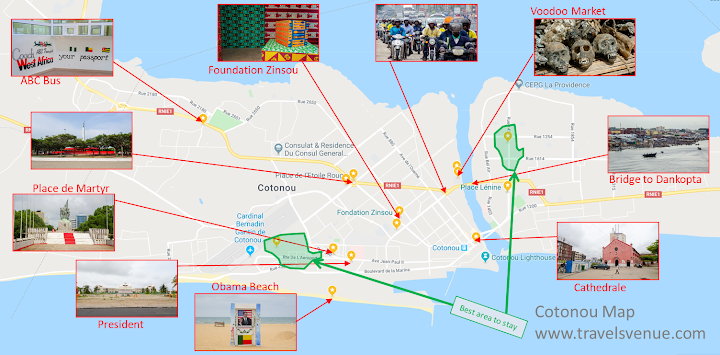






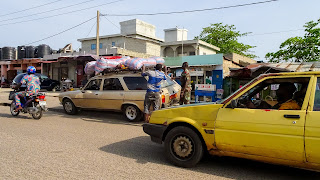
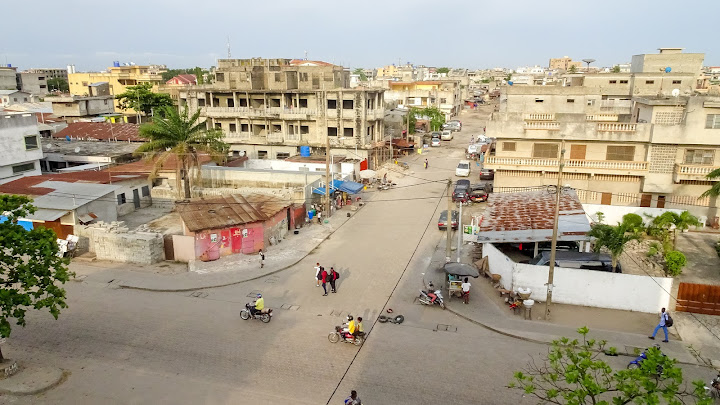
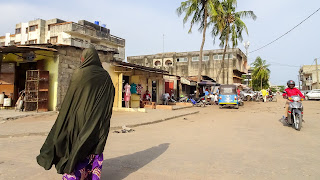

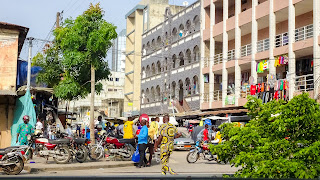












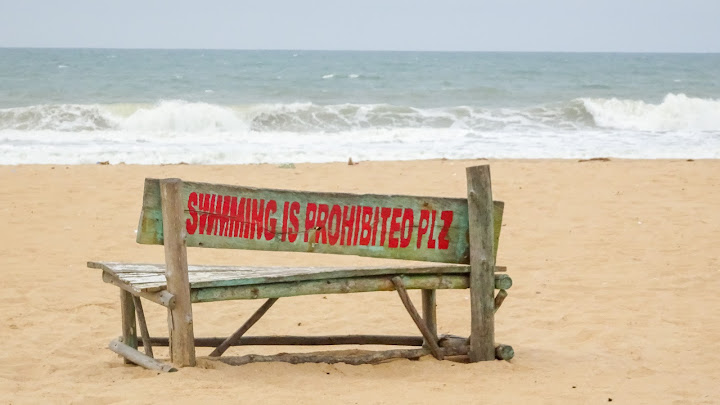








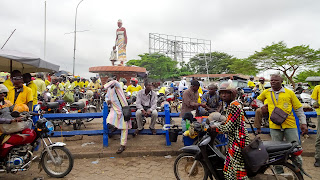


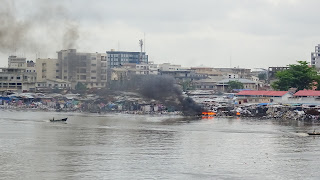




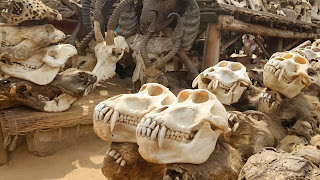

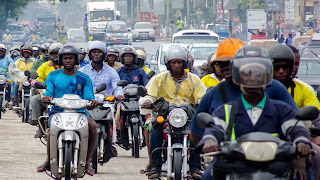
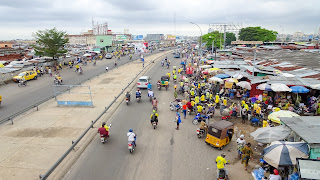
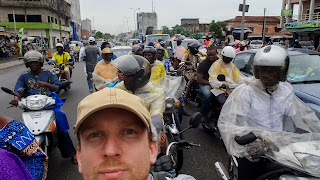












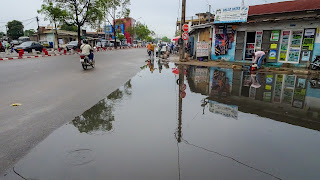
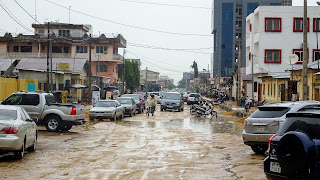


Hmm, other than the beach, I can't say Cotonou looks too mesmerizing, ha. Wow, that was enthralling though - thanks for your candid presentation of the place!
ReplyDelete